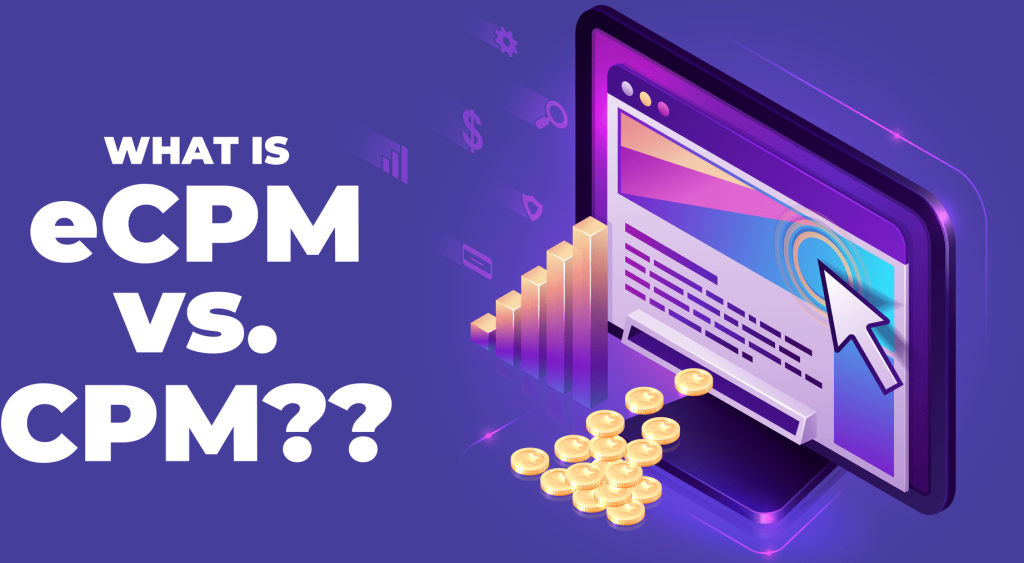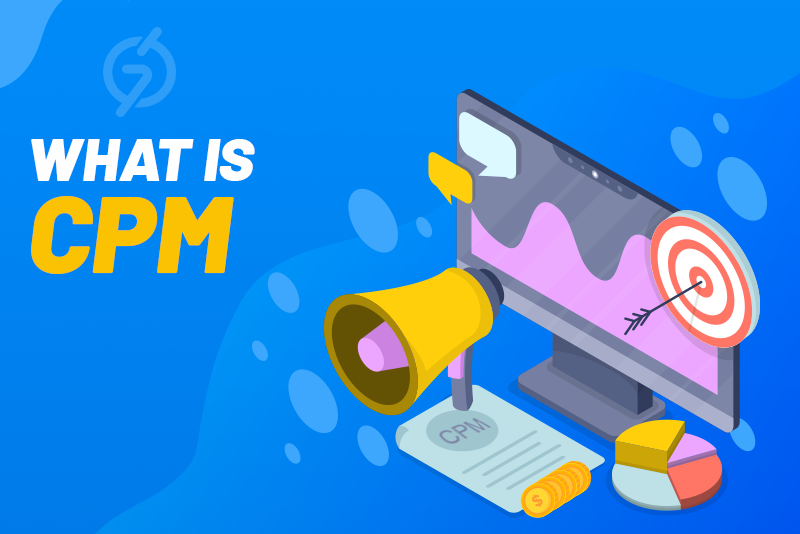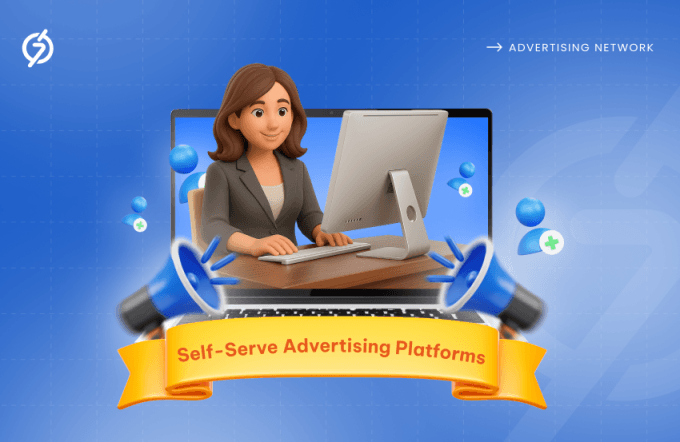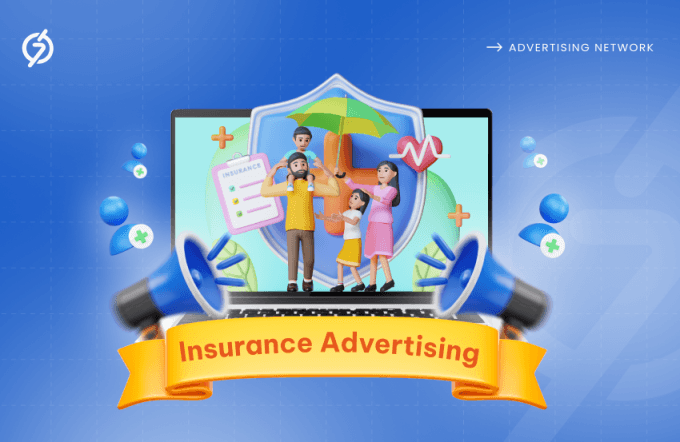In the modern digital world, capturing attention is the ultimate goal of marketing. It is the initial step that many marketers aim for during the introduction stage. This type of brand promotion transforms strangers into a potential customer base. However, it becomes tough for new businesses to stand out and speak up about their brands with so much competition available. This is where understanding CPM campaigns becomes crucial.
Cost per thousand impressions (CPM) is a fundamental pricing model in digital advertising. To illustrate, we have all encountered large banner ads on the roadside. The primary motive of these banners is to make people familiar with their brand. However, you don’t necessarily know if each viewer will pay attention or take action.
Similarly, CPM focuses on maximizing brand visibility by ensuring your online ad reaches a specific number of viewers. It’s a powerful advertising strategy for building brand awareness and reaching a broad target audience.
Let’s take a closer look at how CPM campaigns work and how you can use it to attain your digital advertising goals.
What do CPM Campaigns Mean in Digital Advertising?
CPM in digital advertising refers to Cost Per Mille, which literally means “cost per thousand” (mille is a Latin word meaning thousand). It is a pricing model where markers pay a set fee for every one thousand times their ad is shown. An impression is counted each time the ad loads on a webpage, regardless of whether a user clicks on it or not. CPM campaigns are perfect for increasing brand awareness and reaching a wide audience.
They are a good choice for launching a new product or service or for keeping your brand top-of-mind for consumers. Since you are paying for views rather than clicks, CPM lets you reach a large audience for a predictable cost.
However, CPM ads don’t guarantee that users will take action but ensure that they will remember your brand name when they need something in the product category you advertise.
Steps to Calculate CPM
Here are the steps to calculate CPM (Cost Per Mille)
- Gather your data: You will need two key pieces of information:
- Total Costs: This is the total amount you are spending on the advertising campaign.
- Total Impressions: Ad impressions are the number of times your ad is displayed.
- Divide the cost by impressions: Simply divide the total cost of your campaign by the total number of impressions.
- Multiply by 1000: CPM is typically expressed as a cost per thousand impressions. So, to get the final CPM value, multiply the result from step 2 by 1000.
Here is the formula that can help you understand the CPM better:
CPM= (Total Cost / Total Impressions) x 1000
For example, if your CPM campaign costs $10,000 and you receive 500,000 impressions, your CPM would be:
CPM= ($10,000 / 500,000) X 1000
CPM = $20
This means you are paying $20 for every 1,000 times your ad is displayed. The provided CPM formula applies to all your CPM campaigns.
The Advantages of CPM Campaigns
CPM ad campaigns offer several advantages for advertisers, making them a popular choice in the digital advertising world. Here are some of the key benefits:
Effective Brand Exposure
CPM advertising is excellent for ensuring that your brand gets exposure to a large audience. With CPM, you pay for impressions (views), which guarantees that your ad is displayed multiple times, even if users don’t click on it. This repetitive display helps to establish brand recognition and familiarity, ensuring that your brand will come to consumers’ minds when they are ready to make a purchase.
Efficient Budget Allocation
CPM campaigns allow advertisers to have predictable budgeting. What does this mean? They can set a cost per thousand impressions, giving them full control over their total campaign spend. This is ideal for reaching a broad audience without overspending. It is especially beneficial for new businesses or those with limited marketing budgets.
Targeted Visibility
Many CPM ad networks offer granular targeting options. These options ensure that your ads are displayed on relevant websites or platforms frequented by your ideal customer base. This increases the likelihood of your ad resonating with viewers, leading to higher engagement and brand visibility in a targeted way.
Testing and Refinement
CPM campaigns are perfect for testing different ad variations. By focusing on ad impressions, you can gauge audience response to various:
- Creatives
- Messaging
- Design Elements
Analyzing this data helps you refine your approach for better results in future ad campaigns.
Potential for Increased Click-Through Rates
While CPM doesn’t directly focus on clicks, well-designed and targeted CPM campaigns can lead to a higher CTR. Confused? Let’s clarify how CPM can actually increase CTRs. As brand awareness increases and your audience becomes familiar with your message, they may be more likely to click on your ad when they see it again in other formats (like CPC campaigns).
eCPM vs. CPM: Different Metrics for Different Motives
eCPM and CPM are both metrics used in digital advertising, but they measure different aspects. What are they? Let’s find out:

CPM (Cost-Per-Mille)
It is a metric primarily used by advertisers to determine the cost of reaching 1000 potential audience with their ad. It’s a fixed rate that advertisers agree to pay for every thousand impressions their online ad receives, helping them plan and budget their advertising campaigns effectively.
eCPM (Effective Cost Per Mille)
eCPM is more relevant to publishers. It shows the estimated revenue generated for every thousand impressions, considering the revenue earned from various ad formats and placements. Unlike CPM, which is a fixed rate set by advertisers, eCPM fluctuates based on factors like:
- Demand for ad space
- Audience engagement
- Efficiency of ad placements
For instance, consider a scenario where you have two ad spots on your iGaming website. Spot A consistently gets a higher click-through rate than Spot B. Advertisers might bid $4 for Spot A and $3 for Spot B. While the CPC rates are fixed, your eCPM will reflect the actual revenue earned from each spot, considering how much advertisers are willing to pay for the higher engagement in Spot A versus Spot B.
Overall, CPM helps advertisers manage costs and allocate budgets, and eCPM gives publishers insight into the revenue potential of their ad inventory, permitting them to optimize placements and maximize earnings.
How to Calculate eCPM?
Above, you understand the formula to find CPM. But how can you calculate eCPM?
Here is the formula to calculate eCPM:
eCPM = (Total earnings / Total number of impressions) x 1000
Suppose your website earns a total of $500 a day from ads, and you’ve served 100,000 ad impressions.
Your eCPM would be calculated as follows:
($500 / 100,000) x 1000 = $5 eCPM
So, what are you earning for every thousand impressions? As a publisher, you generate $5 in revenue for every 1,000 impressions.
Challenges and Considerations in CPM Campaigns
In CPM (Cost Per Mille) campaigns, there are several challenges and considerations to keep in mind:
Reach and Relevance
When advertisers focus on reducing cost per mile, they might end up targeting a broader audience, which can reduce the relevance of their ads. This could lead to lower effectiveness in their CPM campaigns, as the ads may not reach as many interested prospects, resulting in lower conversion rates. It’s important to find a balance between audience size and relevance to ensure that the cost savings from lower CPM don’t negatively impact campaign goals.
Balancing with Performance Metrics
CPM measures ad exposure, while CTR and conversion rate gauge audience engagement and action. Integrating these metrics gives a thorough evaluation of campaign effectiveness. A high CPM with low CTR could suggest ineffective ad spending. A balanced approach helps optimize budget allocation according to actual audience interaction.
Assessing Audience Quality
Lower CPM rates often correspond with reaching larger, less targeted audiences. This leads to concerns about the quality of engagement and potential for conversion. Advertisers need to assess whether it is worth reaching more people if it means fewer of them are really interested.
Ad Fatigue
Displaying ads frequently to reduce costs on CPM can lead to people becoming tired of seeing them, which makes the ads less effective. This is known as ad fatigue. To prevent this and maintain interest, advertisers should limit the frequency of their ads to the same audience and regularly update the ads to keep them engaging and fresh. This approach helps sustain audience interest and improves the overall effectiveness of the CPM ads.
Ad Placements
Cheaper ad spots may lower the cost per thousand views, but they could harm a brand’s reputation if they appear in locations that do not align with its image or appeal to its target customers. Advertisers should select placements that align with their brand values and resonate well with their intended audience.
This ensures that the ad placements improve the campaign’s effectiveness and enhance people’s perceptions of the world.
What Makes a Good CPM Rate?
If you are looking to find a good CPM for your campaigns, we would like to say that there is no universally good CPM, as it depends on various factors. Yes, there is not a one-size-fits-all answer to what constitutes a ‘good’ CPM. Some factors are given below:
- Industry: Average CPMs vary depending on your industry. For instance, tech or finance might have a higher average CPM than education or non-profit. Do some research to see what CPMs are typical for your specific industry.
- Advertising Platform: Different platforms have different average CPMs. You must research the cost-effective advertising platform that best suits your CPM campaign goal.
- Campaign Goals: Are you trying to focus on increasing brand visibility and awareness, or are you focused on generating clicks and conversions? If your goal is just to get people to see your ad, then a higher CPM might be okay. However, if you want to drive clicks or conversion, you should aim for a lower CPM to maximize your return on investment.
We have also researched some resources that can help you figure out a good CPM for your campaign:
- Industry Benchmarks: Many advertising platforms provide CPM benchmarks by industry. You can use these benchmarks to estimate the appropriate rate for your CPM campaigns.
- Your Budget: How much are you willing to spend on your campaign? This will help you determine your CPM budget, i.e., how much you can afford to spend per impression.
Conclusion
Cost per mile campaigns are highly effective pricing models for marketers seeking to boost brand awareness and reach a wide audience. In CPM campaigns, advertisers pay for ad impressions, ensuring that their ads are displayed multiple times, thus increasing recognition and familiarity.
In this blog, we have also discussed that this pricing model allows for predictable budgeting and targeted visibility to the preferred customer base. However, it is important to maintain a balance between reach and relevance to avoid targeting an uninterested audience.Monitoring metrics such as CTR alongside CPM can help assess campaign effectiveness. Remember, CPM rates vary based on industry, platform, and goals, so understanding these factors is crucial for strategic campaign planning to achieve digital advertising objectives.
Frequently Asked Questions (FAQs)
What are CPM campaigns?
Ans. In a CPM campaign, you pay a certain amount for 1000 impressions, regardless of whether anyone clicks on your ad. It’s a great way to increase your brand visibility!
Why should I trust CPM campaigns?
Ans. If you’re a new business or want to spread brand awareness, CPM is perfect. It lets you reach a lot of people quickly.
Are CPM campaigns better than CPC campaigns?
Ans. Not necessarily! CPC focuses on clicks, while CPM focuses on impressions (people seeing your ad). You can use CPM campaigns for brand awareness and CPC campaigns when you want people to click and visit your website.
Can I target specific people with CPM campaigns?
Ans. Yes! Many platforms let you target your ideal customer by demographics, interests, and more.
Can I run CPM campaigns on PPC ad networks?
Ans. Yes! Many PPC ad networks like 7SearchPPC offer CPM advertising options.
















![Proven Blog Traffic Tips To Grow Your Audience In 2025 [A Beginner-Friendly Guide] 7 Blog Traffic Tips](https://www.7searchppc.com/blog/wp-content/uploads/2025/10/Blog-Traffic-Tips-680x442.png)

